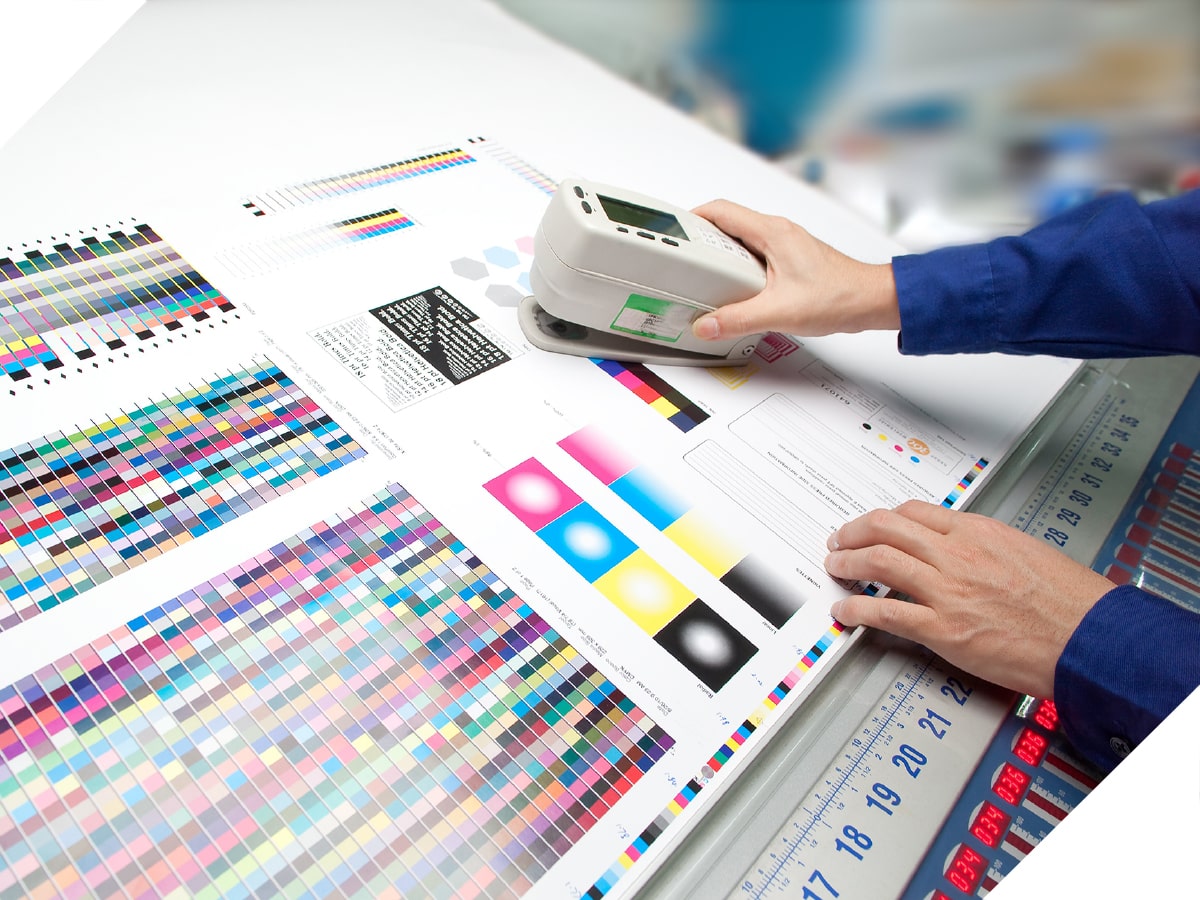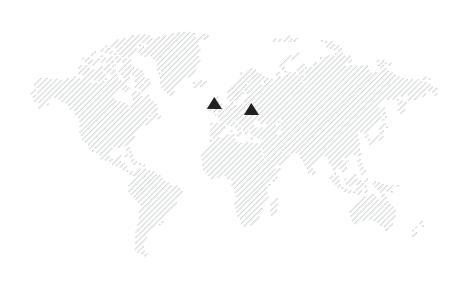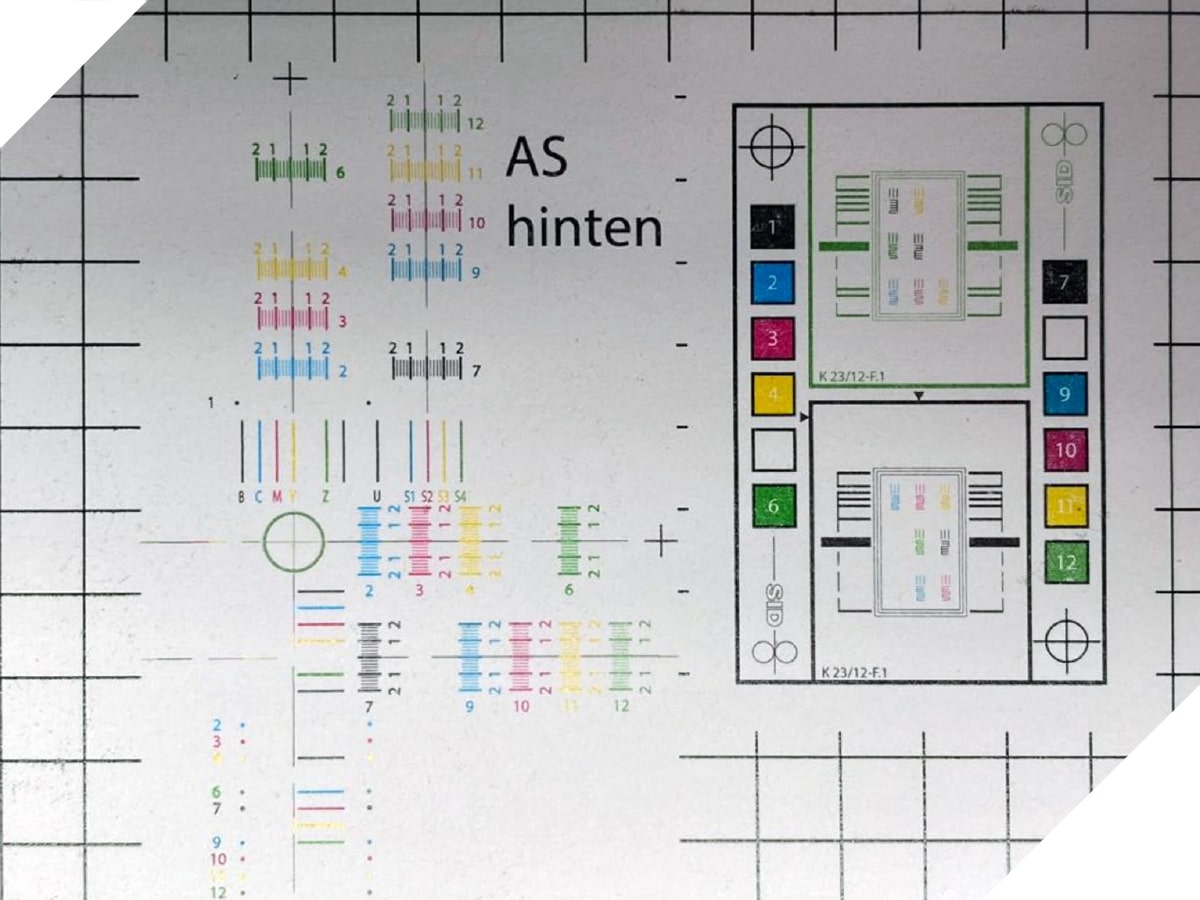
Test Karo
A fairly complex test for checking the sheetfed system of a sheetfed machine. It consists of a grid with specially applied elements to check the colour matching when printing in both straight and perfecting mode. This test is especially important when selecting a printing machine for high-responsibility works with high accuracy of colour matching.
The task of the test is to determine the condition of the sheet transfer system as a whole and between individual units. With the help of decoding of this test the general condition of the sheet transfer system at all - grippers, perfecting device.
Align the lateral register using only the center element at the top part of the sheet. Combine all colors marked with numbers to the base black that is not marked with a number. Do not check or attempt to align the lateral register using other elements!
The next step is to align the circumferential register using only the two elements on the right and left at the top of the sheet. All colors that have numbers are also aligned to the black mark. Do not check or attempt to align the circumferential register using other elements!
The results are then evaluated for possible deviations in the sheet transfer, focusing on all 9 elements. The presence or absence of “trapezium”, “bow”, doubling and other defects is checked, both in the individual units and as a whole. All control sheets are put aside and labeled. Photos are taken of each element, identifying its location on the sheet.
Important.
The file must not be screened. Only individual plates are made!
2. The test speed is between 70 and 85% of the maximum press speed.
3. If the press has a perfector, it must be set to a straight mode.
4. The goal of the test is NOT to achieve optimum register over the entire sheet!
Tension For Different Models
| Printing Press Manufacturer And Model | Total thickness = calibraied sheets + blanket, mm | Blanket Tension, Nm |
| MAN Roland 200/ 300/ 500 | 2,30 | 40-45 |
| MAN Roland 700 | 3,25 | 50-55 |
| MAN Roland 800/ 900 | 3,25 | 65-70 |
| Heidelberg SM102/ CD102 | 3,25 | 65 |
| Heidelberg XL105/ XL106 | 3,25 | 65 |
| Heidelberg SM72/ SM74/ SX74 | 3,25 | 40-45 |
| Heidelberg CD74/ XL75 | 3,25 | 40-45 |
| Heidelberg GTO46/ GTO52 | 3,25 | 30-35 |
| Heidelberg SM52/ SX52 | 3,25 | 30-35 |
| KBA Rapida 74 | 3,20 | 40-45 |
| KBA Rapida 105/ Rapida 106 | 3,20 | 60-65 |
Test duration: 3-5 hours
Amount of paper: required number of sheets is 100-150 per unit, 130-150 g/m2.
Requirements: New blankets and underlay sheets installed.
Blanket tension checked with a torque wrench.
The order of inks and colors:
B-C-M-Y. If there are more than 4 colour units, then colours other than triad colours must be used. If not possible, then M can alternate with C.
Printing is performed on plates made from the special file issued by us. The file consists of up to 12 individual colors. For the test, the number of plates is made starting from form 1 (Black) according to the number of printing units.
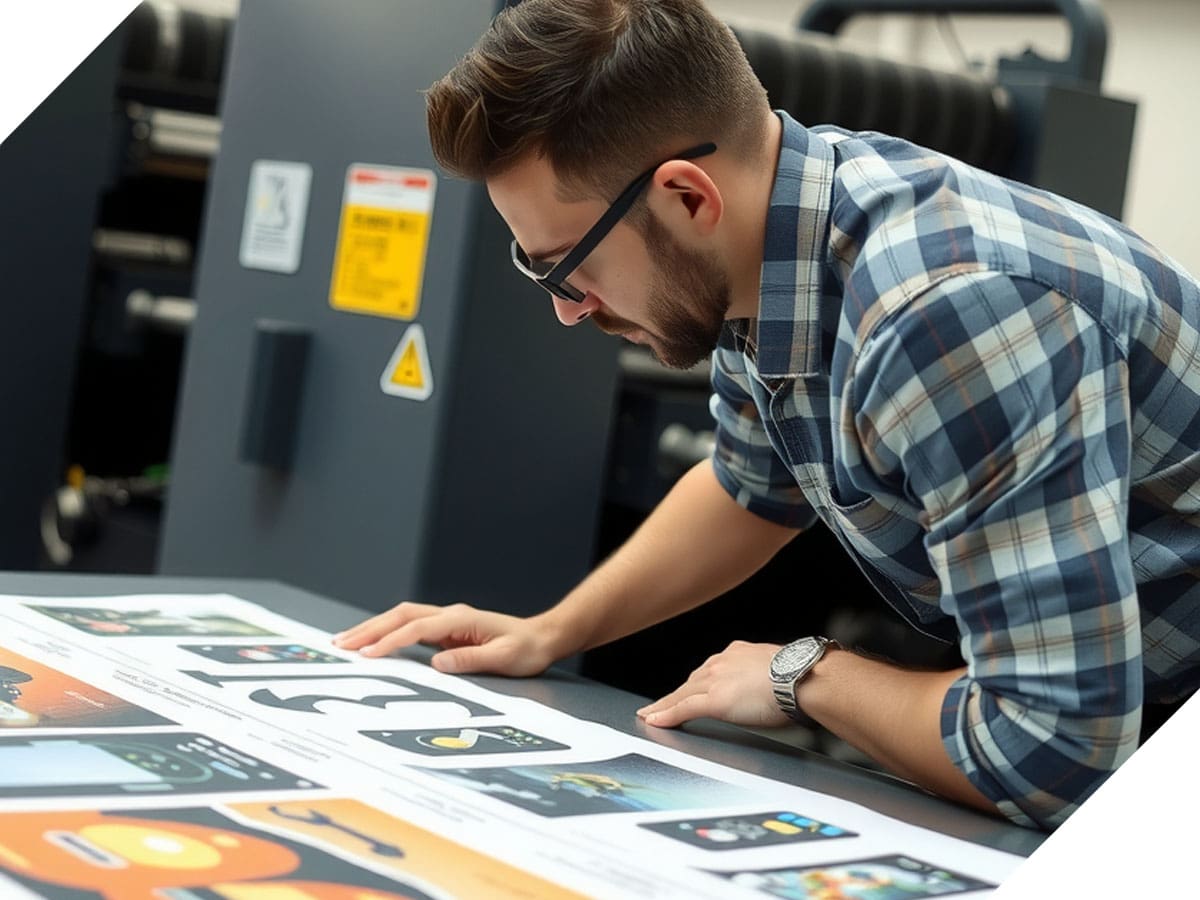
Why the Karo print test is important?
If you only work in the perfecting mode, this will not be critical and you may not notice the difference. But if it is a long machine that will be used in both single-sided and double-sided mode, for example for printing packaging, this discrepancy can be critical and will affect the quality of the product.
In addition, if we detect a discrepancy on Karo print test, we should immediately pay attention to the air settings. Often the compressor may not work, and we need to figure out what happened.
And if we see a divergence of more than 0.1 mm when working with perfector, then it requires serious investment.
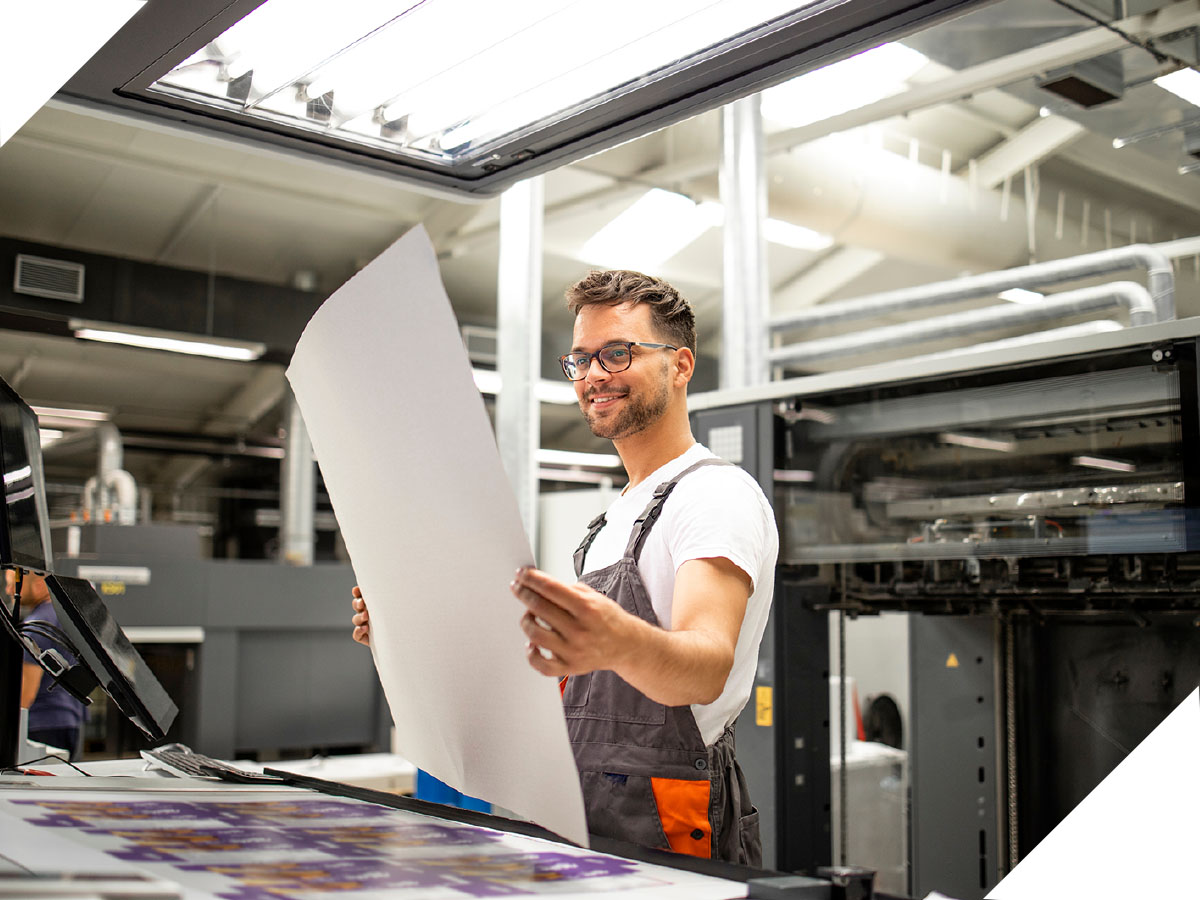
Kiss-Print Test

Karo Print Test
